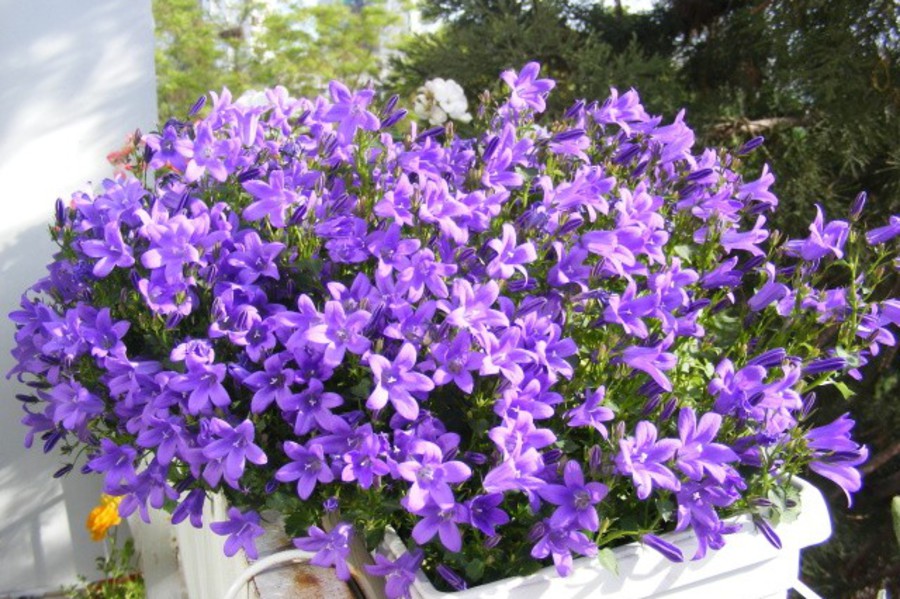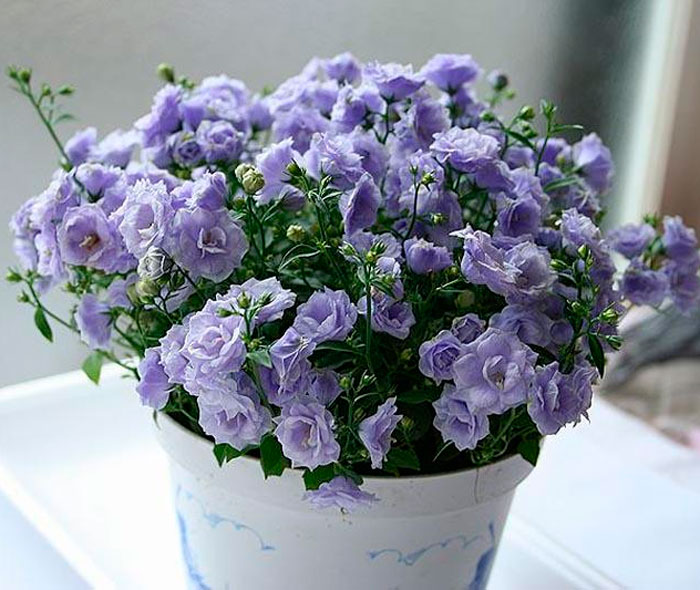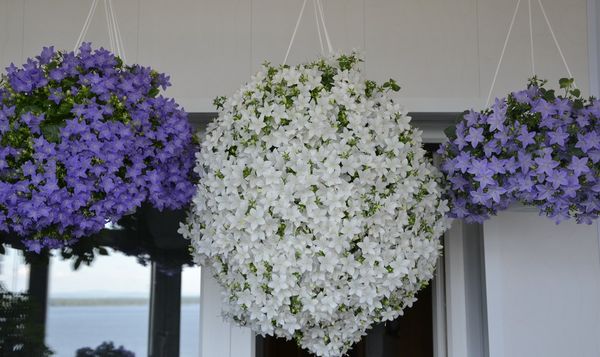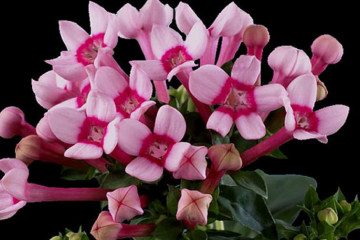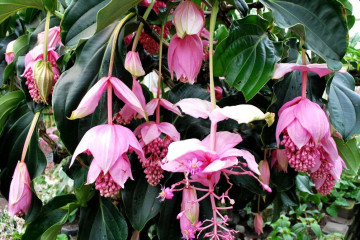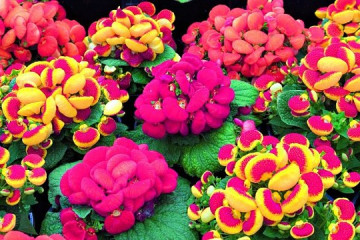Campanula flower - home care
Content:
On the windowsills of many apartments and houses, you can see a lush blue flower. The flowers on it resemble bells. It is called Campanella. Its other name is the groom and the bride.
Campanella is an indoor flower native to the Mediterranean coast. The flowers are shaped like a bell, which gave it its name. There are approximately 400 varieties of this plant in the world. There are perennial, biennial and annual species. Only 15 of them are grown in apartments and gardens.
The most common are the following varieties.
Description of popular varieties
Campanula isifolia
The branches of this variety reach a length of 30 cm. The leaves are petiolate, with a serrated edge. Flowers are collected in a panicle, the size of one flower is no more than 40 mm. Plants with different petal colors, for example, white and blue, are often planted in the same pot. This is what gave rise to the second name of the flower.
Campanula Brauranca
Stems grow no more than 20 cm long, with a large number of leaves. Flowers of a classic shape, bluish color. They grow up to 60 mm in diameter. The flower petals are elongated, they resemble a star in shape. It stands out among other varieties with large leaves and flowers. It can grow both in a pot and outdoors.
Terry campanula
This species was bred as a result of crossing the Carpathian Campanulla and the spoon-leaved. Leaf blades with a carved edge grow along the entire stem. Unlike other species, the calyx of this flower consists of 15 petals. Terry flowers of three shades can bloom on one plant at the same time:
- white;
- blue;
- purple.
With good care at home, terry campanula blooms for a long time. It is better to plant this variety on a plot surrounded by trees.
Campanula Carpathian
Campanula Carpathica differs from others in that the leaves are not located on all stems, but near the root, like a rosette. It grows as a bush, not exceeding 30 cm in height. It is a perennial.
Subspecies are bred with white, blue and purple flowers. Grown on the site.
Campanula Cirillo
Another name is brittle bell. Forms rosettes with blue flowers on the stems. The middle of the sepals are darker in color. Due to long stems with additional branches, it forms beautiful cascades of flowers.
Campanula Portenschlag
Low plant. The leaves are rounded with a sharp top, like hearts. Lilac petals, classic bell-shaped. The stems remain green throughout the winter and dry out only after new shoots regrow.
Campanula Pozharsky
It blooms with bright purple flowers. Flowers do not exceed 20 mm in size. Unlike other species, the leaves of the Pozharsky campula are rounded.
Home care
Campanella flower is an unpretentious plant.For successful cultivation, you need to know how to care for campanula at home.
First steps after purchase
After the purchase, you should not rush to transfer. The plant needs to get used to the new atmosphere. It can be transplanted only 3-4 days after purchase.
Pot selection
Campanula root grows rapidly. Therefore, for its transplant, a flowerpot with a volume of at least 5 liters is chosen. Since this plant belongs to ampelous, it is better to plant it in a flowerpot on a leg or a flowerpot to emphasize its beauty.
What should be the soil
Before planting a flower, you need to prepare the soil. For the growth of campanula, it is better to take a mixture of garden soil, peat and sand, mixed in equal proportions. The earth should be light and loose.
After the soil is prepared and the pot for transplanting is selected, the flower must be watered abundantly. Together with the earth, the flower is taken out of the old pot. The tangled roots at the bottom should be cut off with a sharp knife. The plant is placed in a new vessel and sprinkled with earth. The newly transplanted flower should be placed in a cool place for several days. This will help him to settle down sooner.
Campanula home care further consists in watering and fertilizing. To preserve the aesthetic appearance during flowering, you need to carefully remove the faded flowers.
Flower feeding
During the growing season, flower feeding is carried out once a month. Any complex fertilizer for flowers is suitable for this. During the rest period, feeding is not carried out.
Watering and humidity
Despite the fact that a campanula indoor flower can do without watering for a long time, the earthen coma should not be allowed to dry out. This is especially important in the summer. It is necessary to water the plant with settled water at room temperature.
Watering mode
| Season | Development phase | Number of irrigations |
|---|---|---|
| Spring | The beginning of the growing season and plant development | Starting 2 times a week, gradually switch to watering every day |
| Summer | Bloom | everyday |
| Fall | Cessation of growth | Two times per week |
| Winter | Dormant period | 1-2 times a month |
Campanella is undemanding to air humidity. During extreme heat, you can spray it from a spray bottle, not allowing water to get on the flowers. It is easier to achieve this rule by spraying the leaves from below.
Temperature and lighting
When choosing a place for the location of a flower, one must take into account the fact that campanula is photophilous. However, it does not tolerate direct sunlight. To place a pot with a campanula, it is better to choose east or west windows. When located in the north, the plant needs to provide additional lighting.
The temperature regime for growing a bell should be in the range of 22-25 ° C in summer, and at least 15 ° C in winter.
When caring for a flower, it should be remembered that sharp turns of the plant by 180 ° C badly affect the development of the plant. You need to turn the campanula gradually: at a time no more than 20-30 ° C.
Compliance with these simple rules for caring for the campanula will allow you to get a beautiful lush flower.
Why does not it bloom
For the flowering of campanula, you need to follow some rules:
- The flower must be protected from drafts.
- The plant should be well lit. Sunlight should be diffused.
- It is forbidden to move the plant in the spring.
- The ambient temperature should not be higher than 22 ° C.
- At the beginning of the growing season, feeding should be applied once every two weeks.
- Shoots should not be cut in the spring.
- Flowers bloom only with regular watering. The earthen ball in the pot should always be moist.
The reason for the absence of flowers on the plant may be age. In this case, a new plant should be planted from seeds or cuttings.
How to deal with Campanula diseases
The appearance of problems with the flower indicates improper care. If the irrigation regime is violated, the plant is exposed to fungal infection. To eliminate the damage, watering should be reduced.
Also, a spider mite and scale insect may appear on the plant. To eliminate pests, the flower is treated with an insecticide, you can also wash them off with warm running water.
Reproduction methods
Campanula can be propagated in three ways:
- Seeds;
- Cuttings;
- By dividing the bush.
Growing from seeds
The plant is grown from seeds in spring. Campanula seeds are small, so a small pot can be used for sowing. It is not necessary to deepen them. Sprinkle the seeds on top with a small layer of sand. The sown seeds should be sprayed with a spray bottle.
It is possible to transplant sprouts to a permanent place only after the appearance of 3 true leaves.
To get a spreading flower, you need to pinch the top when the seedling reaches a height of 12 cm.
Cuttings
The flower is propagated by cuttings in the fall. For cuttings, branches are selected from the bottom of the plant. Cooked stems are placed in a weak solution of potassium permanganate for 10 hours. After that, the cuttings are placed in a vessel with cool clean water and the roots are waiting for the appearance of the roots.
Sprouted cuttings are planted in loose soil to a depth of 3 cm. A greenhouse of film or glass should be built above the pot. Watering young plants should be sprayed once a week.
This unpretentious beautiful plant will decorate any apartment. With its help, you can diversify not only the window sill, but also the flower stand. Combining different types with each other, you can create an exquisite flower arrangement. Blue and white balls of bells grown in hanging pots will become the center of attention on a veranda or loggia.
